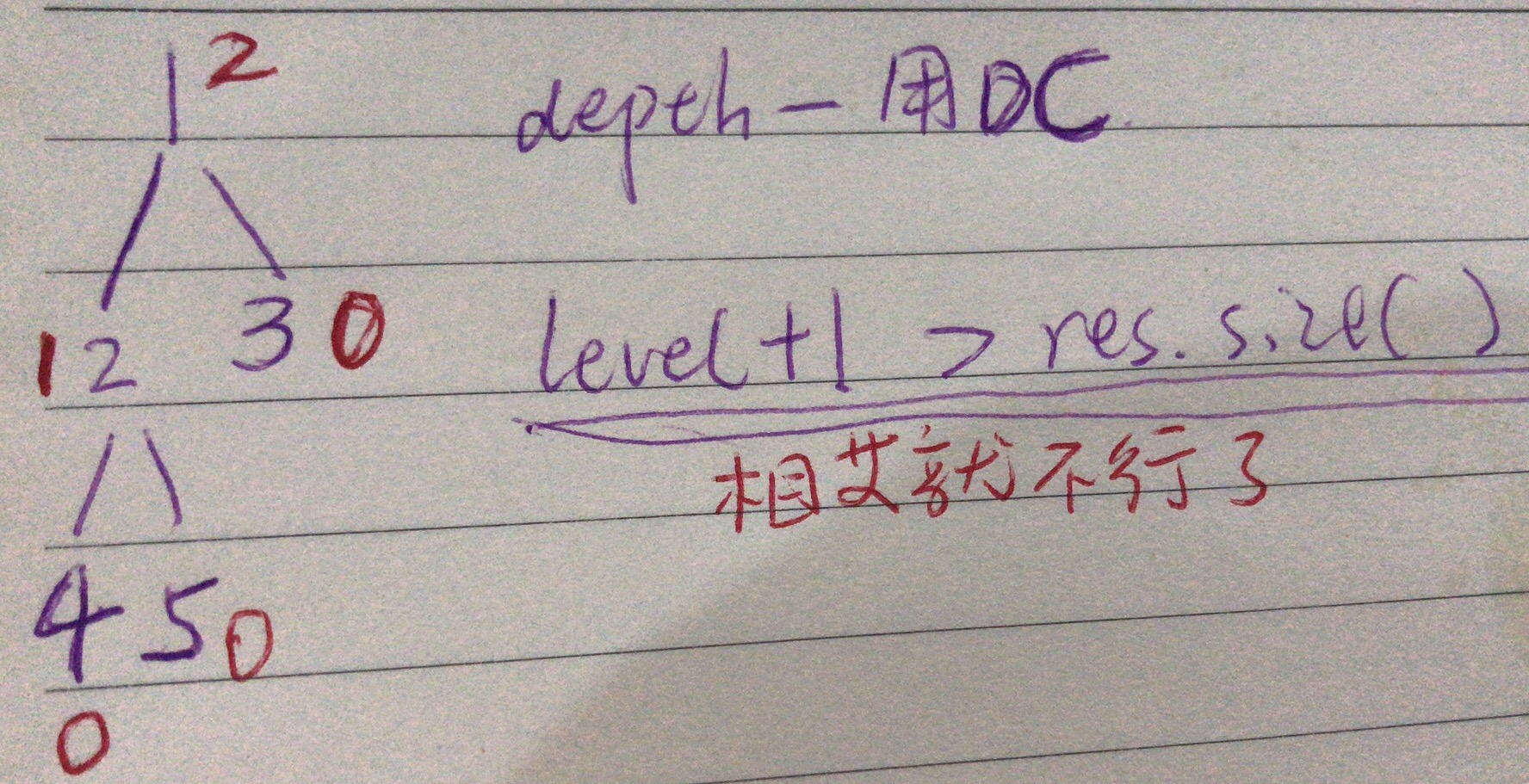[抄题]:
Given a binary tree, collect a tree's nodes as if you were doing this: Collect and remove all leaves, repeat until the tree is empty.
Example:
Given binary tree
1
/
2 3
/
4 5
Returns [4, 5, 3], [2], [1].
Explanation:
1. Removing the leaves [4, 5, 3] would result in this tree:
1
/
2
2. Now removing the leaf [2] would result in this tree:
1
3. Now removing the leaf [1] would result in the empty tree:
[]
Returns [4, 5, 3], [2], [1].
[暴力解法]:
时间分析:
空间分析:
[优化后]:
时间分析:
空间分析:
[奇葩输出条件]:
[奇葩corner case]:
root为空
[思维问题]:
没看出来是dc-depth的题,详见此图,请理解:

[英文数据结构或算法,为什么不用别的数据结构或算法]:
[一句话思路]:
[输入量]:空: 正常情况:特大:特小:程序里处理到的特殊情况:异常情况(不合法不合理的输入):
[画图]:
[一刷]:
res.get(level).add(node.val);可以实现精确添加,指定哪一层添加哪个数
[二刷]:
双层数组的添加,直接.add(new ArrayList<>());就行了 不需要指定名字
helper(result, root); int函数调用的时候可以没有返回值,直接用
[三刷]:
[四刷]:
[五刷]:
[五分钟肉眼debug的结果]:
[总结]:
[复杂度]:Time complexity: O(n) Space complexity: O(n)
[算法思想:迭代/递归/分治/贪心]:
[关键模板化代码]:
[其他解法]:
[Follow Up]:
[LC给出的题目变变变]:
[代码风格] :
[是否头一次写此类driver funcion的代码] :
[潜台词] :

/** * Definition for a binary tree node. * public class TreeNode { * int val; * TreeNode left; * TreeNode right; * TreeNode(int x) { val = x; } * } */ class Solution { public List<List<Integer>> findLeaves(TreeNode root) { //ini List<List<Integer>> result = new ArrayList<List<Integer>>(); //cc if (root == null) return result; //call the helper function depthHelper(result, root); //return return result; } public int depthHelper(List<List<Integer>> result, TreeNode root) { //cc: root == null if (root == null) return -1; //get depth int depth = 1 + Math.max(depthHelper(result, root.left), depthHelper(result, root.right)); if (depth + 1 > result.size()) result.add(new ArrayList<Integer>()); //add root.val result.get(depth).add(root.val); return depth; } }
